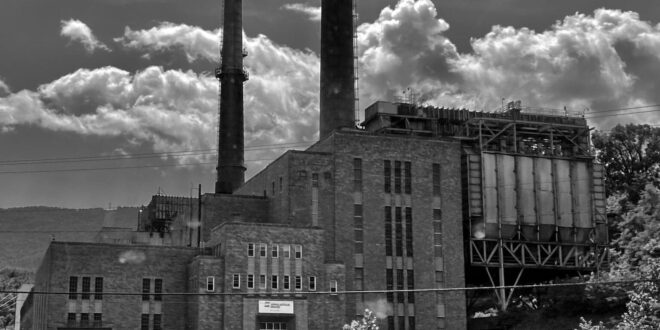The U.S. coal industry chalked up a couple of rare wins this summer. First the Supreme Court issued a ruling limiting the government’s ability to regulate greenhouse gas emissions from power plants. Then President Joe Biden’s climate plan stalled in Congress again.
But while some specific threats to the industry have subsided, that doesn’t mean coal-fired power plants will make a comeback.
As an economist, I analyze the coal industry, including power plant construction and retirement plans. I see three main reasons U.S. coal plants will continue to close down.
A detail related to the Supreme Court case helps tell the story. The case, West Virginia v. EPA, involved the Clean Power Plan, a set of Obama-era regulations proposed in 2015 that would have required power plants to make deep cuts in greenhouse gas emissions. For those powered by coal – historically the dominant source of carbon dioxide emissions in the U.S. electricity sector – that likely would have meant shifting away from coal altogether.
Yet even though the Clean Power Plan never went into effect, coal use has declined so much that the U.S. power sector has already met the plan’s 2030 target.
Why the power sector is moving away from coal
At its peak in 2007, coal was responsible for almost 2 trillion kilowatt-hours of electricity generation in the U.S., equivalent to powering over 186 million homes for the year.
By 2021, that total had dropped by 55%.
The drop was due in large part to an industrywide shift in electricity generation, away from coal-fired units toward natural gas and renewable energy. That shift is happening for three main reasons.
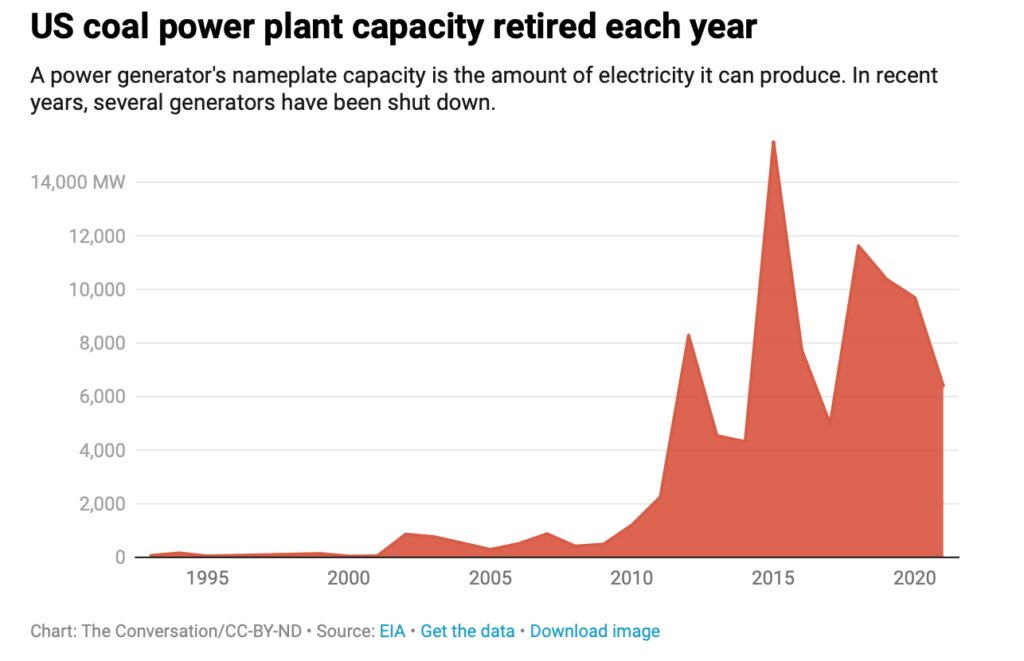
- Natural gas prices
Natural gas prices have decreased significantly – over 60%between 2003 and 2019 – mainly because of improvements in hydraulic fracturing and horizontal drilling, which allow drillers to extract more gas from shale.
The influx of natural gas led to substantial increases in additions of natural gas-fired electricity generators. These natural gas power plants are newer, have similar and sometimes lower fuel costs, and are more efficient at generating electricity than the existing coal-fired generators.
They also are able to come online at full power within one to 12 hours, while a coal-fired generator can take up to 24 hours to be fully ready to produce power. Because of this necessary lead time, it is difficult to rely on coal-fired generators when demand rises and the power grid needs more electricity quickly.
For example, the electric system faces the highest demand for electricity generation between 7 a.m. and 11 p.m. on weekdays. If demand spikes, a coal-fired generator will miss the window when electricity is needed. Natural gas generators can meet the demand much faster, often making them more profitable for utilities.
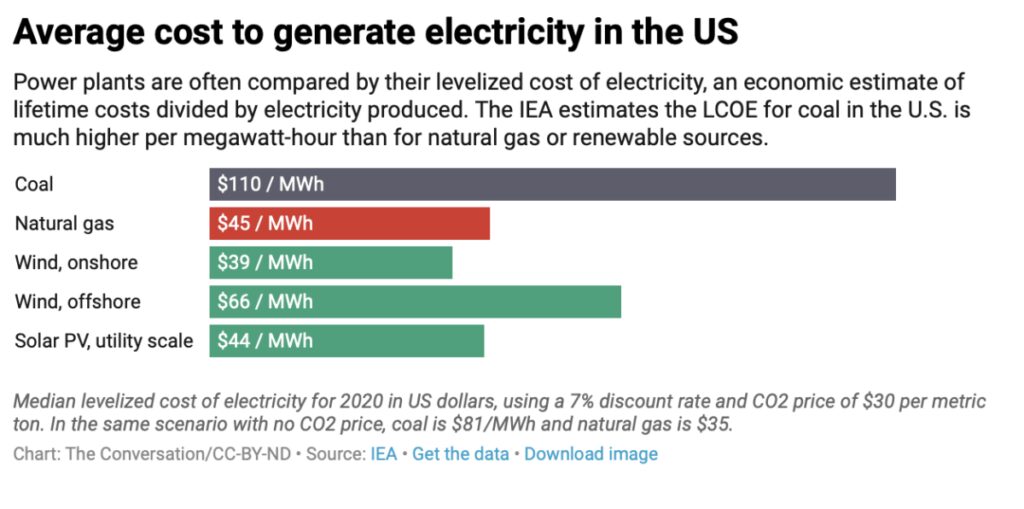
- The rise of renewable energy
Solar and wind energy are now cost competitive with fossil-fueled generators, primarily because of technological advancements.
Many states and the federal government also offer incentives for renewable energy production, which lowers the cost to install them. And, once built, renewable energy sources have no fuel costs and relatively low operational costs compared with coal-fired generators.
A record 17.1 gigawatts of wind capacity came online in the U.S. in 2021 after a tax incentive was extended, and 7.6 gigawatts are planned this year.
Solar energy accounts for 46% of all new electricity generating capacity expected to join the grid in 2022, about 21.5 gigawatts.
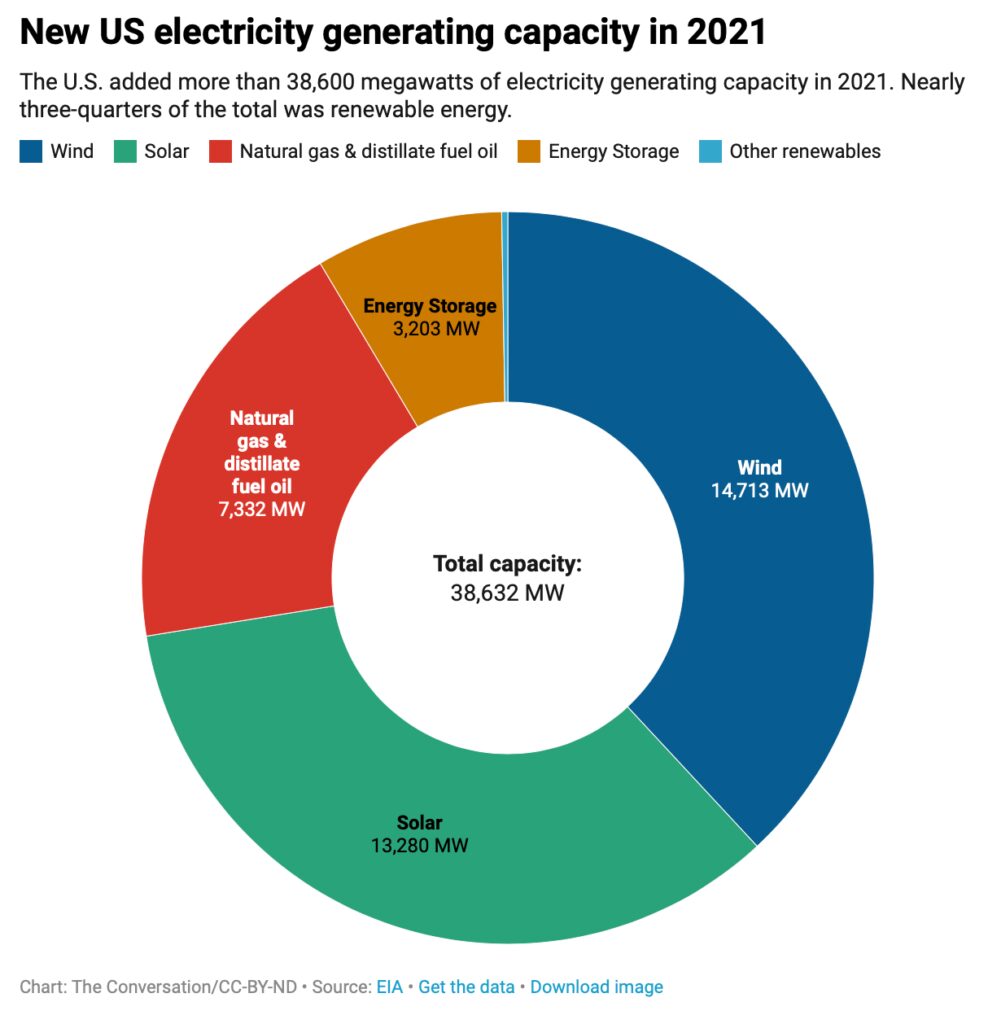
- Environmental regulation
The government has instituted several environmental regulations over the past few decades aiming to reduce sulfur dioxide, nitrogen oxides, particulate matter, mercury and other hazardous air pollutants emitted by the electric power sector.
These hazardous emissions are linked to health problems including respiratory illnesses and neurological and developmental damage, as well as smog, acid rain and climate change. According to the U.S. Government Accountability Office, coal-fired generators are by far the largest electricity-sector sources.
To comply with the regulations, coal power plant operators have installed scrubbers to remove the pollutants from their emissions, switched coal types to lower-sulfur coal, and invested in other methods to reduce sulfur and other impurities. As a result, costs have increased for the coal-fired fleet.
These higher environmental mitigation costs, coupled with lower wholesale electricity prices over recent years, have meant coal plant operators have had a tougher time recovering the cost of the capital investments to maintain their older coal-fired generators. Instead, many have chosen to retire those units.
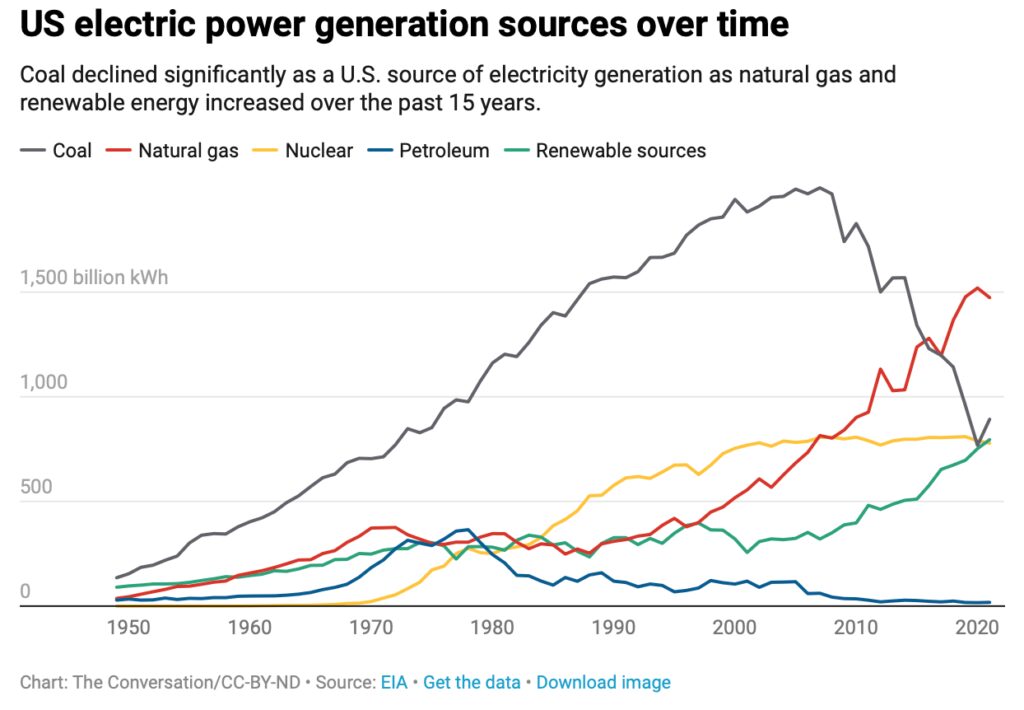
Coal power’s future: More early retirements
So what does this mean for the future of U.S. coal power?
The U.S. Energy Information Administration reports that coal generators account for 85% of the electric generating capacity being retired this year nationwide.
This trend is expected to continue, with substantial coal generator retirements occurring by 2030. This is a result of both market factors – cheap natural gas and affordable renewable energy – and regulatory measures.
Coal is used more widely in other countries, including China, and U.S. coal companies have increased their exports in recent years. However, coal use elsewhere could follow the U.S. trajectory.
At the 2021 United Nations climate change conference, over 40 countries committed to completely shift away from coal, and 20 others – including the U.S. – pledged to stop government financing of coal use, unless it includes carbon capture technology. The Biden administration, while unable so far to get its climate policies through a deeply divided Congress, is weighing new regulatory options that could further affect the cost of generating electricity with coal.
It all adds up to a difficult U.S. economic environment for coal power for the foreseeable future.
 Eurasia Press & News
Eurasia Press & News
